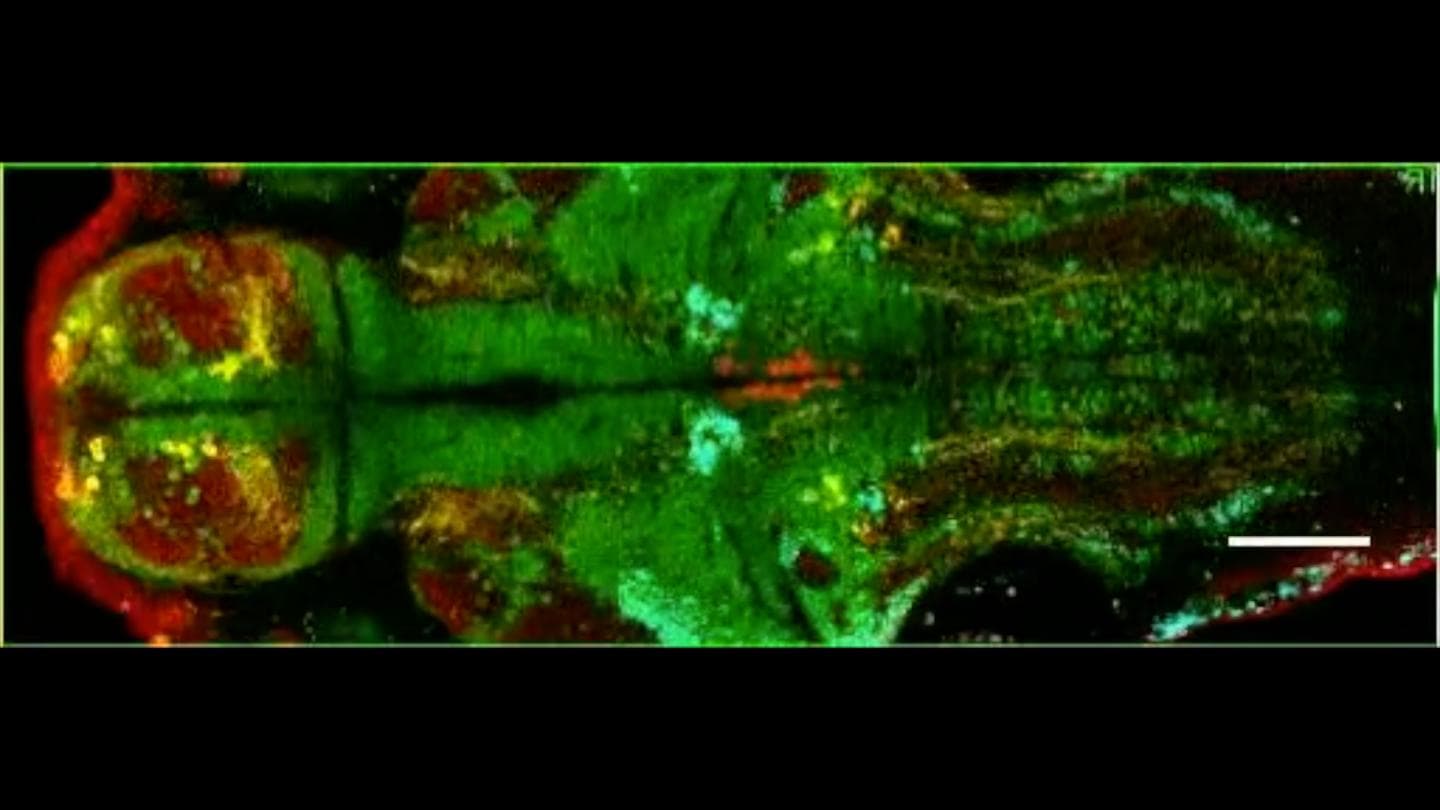Brain's alertness circuitry did not change in a million years
While surfing the internet, I often hit a particular picture for making a technology-based event brochure and that is a brain coalesced with digital circuits, going through it as if veins - piercing through our body. As a crude observer, it was the picture that made me ask a question. What if these circuits exist without changing its patterns for thousands of years? Generally, in the 21st century, an electronic equipment has become ever changing. And the corresponding design also changes, if not with every batch then in every two or three years. However, call it the God or the magical formula, it probably gets fewer chances to make a circuit, so they make it in a way which can last more than a million years. Sounds eerie? Let's find out what scientists at the NIH and Stanford university have recently discovered.

The one I had my eyes on
The initial set up was made to test and fully understand the underlying mechanisms and cell types involved to produce our behavior. Taking help of a molecular MultiMAP method, the team recorded from 22 neuromodulatory cell types in behaving Zebrafish while they were under investigation for a reaction-time task that directly depicts their brain's alertness. From this experiment, they logged monoaminergic, cholinergic, and peptidergic cell types linked to alertness that is mutually correlated during heightened alertness. Later on, when they experimented with similar neuromodulatory cells in mice, they found out a striking similarity in cell types that cause alertness. Can you imagine? these two species have separated long ago from each other and still, their inherent circuitry was intact rather had the type of similarity that was out of limits until now.

Joshua Gordon, director of the NIH's National Institute of Mental Health (NIMH) is hopeful about the prospect of this research. According to him, this research promises a great future as it discovers more about the molecular player responsible for certain dysfunctional brain states, such as PTSD or post traumatic stress disorder. As the published material explains, the Multi-MAP technology has uncovered which neurons are activated in a behaving animal during a particular brain state and certainly casts light upon only that neuron to detect the sub-types and corresponding circuitry.
The team further explained their experimental set up where the genetically engineered zebrafish were made to swish their tails as a stimulated behavior in response to a threat signal. The signals were recorded from the activity of neurons seen through the transparent heads. This effort made the scientists unearth six suspect circuits made of a distinct set of neurons among which the only one was known to be responsible for vigilance related neural activity.
The experiment on mice revealed a similar set responsible for such an action. With the help of a pathbreaking optogenetics tool, the research narrowed down their list of suspects to three circuits, responsible for instigating alertness in mice and the other three out of that 6 is finally found to play a reportorial role, not a regulatory one.
If this is true, that the circuits or the mechanisms were conserved for this many years even in distinct species, then human brains are supposed to wire in a similar fashion in tensed situations. Subject to a deeper research looks like we are not so different from the species we treat condescendingly. The research has been published online on Nov. 2, 2017, in the journal Cell.
Watch in detail: the neural basis of alertness -
Source: <a href="https://www.cell.com/cell/fulltext/S0092-8674(17)31243-6" target="_blank" rel="nofollow noopener noreferrer">www.cell.com</a>

The one I had my eyes on

Multi-MAP image of zebrafish neural activity serotonin (red), dopamine and norepinephrine (yellow) and acetylcholine (cyan)
Joshua Gordon, director of the NIH's National Institute of Mental Health (NIMH) is hopeful about the prospect of this research. According to him, this research promises a great future as it discovers more about the molecular player responsible for certain dysfunctional brain states, such as PTSD or post traumatic stress disorder. As the published material explains, the Multi-MAP technology has uncovered which neurons are activated in a behaving animal during a particular brain state and certainly casts light upon only that neuron to detect the sub-types and corresponding circuitry.
The team further explained their experimental set up where the genetically engineered zebrafish were made to swish their tails as a stimulated behavior in response to a threat signal. The signals were recorded from the activity of neurons seen through the transparent heads. This effort made the scientists unearth six suspect circuits made of a distinct set of neurons among which the only one was known to be responsible for vigilance related neural activity.
The experiment on mice revealed a similar set responsible for such an action. With the help of a pathbreaking optogenetics tool, the research narrowed down their list of suspects to three circuits, responsible for instigating alertness in mice and the other three out of that 6 is finally found to play a reportorial role, not a regulatory one.
If this is true, that the circuits or the mechanisms were conserved for this many years even in distinct species, then human brains are supposed to wire in a similar fashion in tensed situations. Subject to a deeper research looks like we are not so different from the species we treat condescendingly. The research has been published online on Nov. 2, 2017, in the journal Cell.
Watch in detail: the neural basis of alertness -
Source: <a href="https://www.cell.com/cell/fulltext/S0092-8674(17)31243-6" target="_blank" rel="nofollow noopener noreferrer">www.cell.com</a>
0
